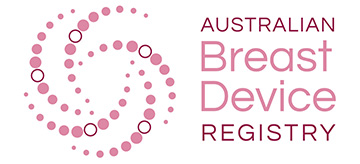ISSUE #6 ABDR newsletter out now
December 22, 2017
ABDR Newsletter Dec 2017 #6
Welcome to the sixth issue of the Australian Breast Device Registry (ABDR) Newsletter to keep you up to date on the progress and latest news about this world-first registry.
2017 REVIEW IN NUMBERS
- The ABDR has achieved record growth this year; the number of participants included into the ABDR more than doubled in 2017, while the number of opt-outs remained less than 1%.
- In addition, the ABDR is leading world efforts to harmonise data between international breast implant registries and to benchmark best practice, and now uses SMS technology to collect patient feedback on the look and feel of breast implants.
ABDR PROGRESS IN 2017
As we rapidly head towards the end of the year, the ABDR team would like to sincerely thank all our stakeholders, contributing surgeons, supportive nursing, theatre, administration and practice staff and the thousands of patients contributing to this important registry.
Combining breast implant data world-wide
We are in the final stages of formalising a globally agreed set of data points (with definitions) to enable breast implant registries world-wide to talk to one another. Analysis of globally consistent data is likely to aid earlier detection of trends or complications of breast device surgery. The ABDR team worked with members of ICOBRA (International Collaboration of Breast Registry Activities) to develop the minimum dataset throughout the year and a peer reviewed paper of the findings are expected to be published next year.
Benchmarking quality of care
A panel of clinicians has been working with the ABDR to develop standardised indicators that may be used to measure and improve quality of care nationally and internationally. The quality indicators will be applicable to both augmentation and reconstruction surgeries and are expected to be published next year.
Patients give feedback on breast implants via SMS questionnaire link
Following on from a successful pilot, PROMs (Patient Reported Outcome Measures) will use SMS technology to collect information on the look and feel of breast implants for up to 10 years after surgery.
Patient feedback on the appearance and feel of their implants is a crucial component of the ABDR’s work and will be used to help to predict long term trends or complications associated with breast implants or the surgery. Read more here:
Call for Data Collection Forms
Have a batch of completed data collection forms? Please return these DCFs to the ABDR so this important information is included in the registry. If you are not sure how to return the forms, or require reply paid envelopes please speak to an ABDR research officer.
Coversheets can be downloaded here. Need more leaflets?
All patients in the ABDR need to be provided with a leaflet prior to surgery. To order more pre-printed ABDR information leaflets or posters, please contact your nearest ABDR research officer.
The quality of data submitted in the DCFs determines the quality of reports we can provide to contributing surgeons!
ABDR hosted seminar: ‘Device, Data & Decision-making’, a success
The Australian Breast Device Registry (ABDR) shone the spotlight on device registries during an afternoon seminar on Wednesday 6th December 2017. A line-up of international and national experts provided unique insight into issues affecting device registry research, attracting delegates representing health service providers, government agencies, research organisations and industry.
The event’s agenda included data harmonisation, global and Australian surveillance of medical devices, the impact of registries on healthcare, and modelling for device versus operator failure, finishing with an excellent panel discussion on funding models for sustainable device registries. Photo and event details here:
News in brief
ABDR and ALCL
The ABDR continues to work with the TGA and Macquarie University to help detect and report on breast implant associated anaplastic large cell lymphoma. Dr Ingrid Hopper is ABDR Project Lead and a member of the TGA’s expert advisory panel on ALCL. Hear her interview with Norman Swan on The Health Report about the disease here.
2016 Annual report
Following a successful review meeting by representatives from clinical stakeholders, the Department of Health and the TGA, the ABDR 2016 annual report is being finalised for publication. Due to the festive break, the report is slated for print early next year.
2017 Publications
- Cooter R, Hopper I, Ahern S, Best R, McNeil J; The Australian Breast Device Registry – breast device safety transformed; ANZ J Surg; 2017 Jan;87 (1-2):9-10
- Ahern S, Hopper I, Evans SM; The strengths and limitations of clinical quality registries for public reporting of clinician level performance; Med J Aust; 5 June 2017
- Hopper I, Ahern S, McNeil JJ, Deva A, Elder E, Moore CM, Cooter RD. Improving the safety of breast implants – implant associated lymphoma. Med J Aust Perspectives; 28 August 2017
- Loch-Wilkinson A, Beath KJ, Knight RJW, Wessels WLF, Magnusson M, Papadopoulos T, Connell T, Lofts J, Locke M, Hopper I, Cooter R, Vickery K, Joshi PA, Prince HM, Deva AK. Breast Implant-
Associated Anaplastic Large Cell Lymphoma in Australia and New Zealand: High-Surface-Area Textured Implants Are Associated with Increased Risk. Plast Reconstr Surg. 2017 Oct;140(4):645-654 - Hopper I, Ahern S, Nguyen TQ, Mulvany C, McNeil JJ, Klein H, Stark B, Rakhorst H, Cooter RD. Breast device registries – a call to action. Aesthetic Surgery Journal. 2017 In press.


